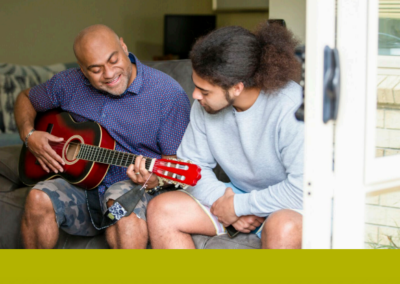Case Study_Monte Cecilia_FINAL

That is worrying community housing organisations who say that huge increases in permanent, long-term public housing are needed to tackle rapid growth in the number of people urgently seeking a home.
Quarterly housing data released last month showed that the waiting list for public housing (state housing and NGO housing) had passed 10,500, a 70 per cent increase in a year. The wait for a house is now typically 100 days, up from 60 days a year ago.
In response, Housing Minister Phil Twyford said the Government was “pulling out all the stops” to urgently house people, and its increase of 1658 public housing places last year was the most in a decade.
The Ministry of Housing and Urban Development confirmed to the Herald a third of the new places were either properties sourced from the private market or what were known as “redirects”.
This is when tenants housed with non-government providers – like councils or charities – are moved on to government funding. In some cases, the tenant remains in the same house or unit, and it is only their subsidy that changes.
The change of funding means the tenant gets more generous support, and it reduces the public housing waiting list. But redirects do not amount to a long-term increase in capacity in the public housing system. And in Auckland, they make up three-quarters of all the new public housing places created last year.
Twyford said the Government had always been upfront that not all new public housing spaces were new builds and that some came from other sources.
The Government did not have unlimited funds and it was working hard to provide as much public housing as possible with the funding available, he said.
“Ideally, we’d like as many of these new places as possible to be new builds,” he said.
He said on top of the extra public housing places, Housing NZ and community housing groups had 2155 more homes under construction – meaning the rate of new builds was likely to accelerate.
Community Housing Aotearoa chief executive Scott Figenshow said he was “thrilled” that more high-needs tenants were getting government support.
“Where we want to go, though, is we need to see significant investment in adding net, new, affordable housing stock.
“Because if we’re going to get our way out of this crisis, we have to adding new units that are affordable.”
The practice of redirecting tenants also had a knock-on effect. It swallowed up much-needed affordable homes which were owned by the council or NGOs.
“What it would do is displace a whole lot of folks who don’t have complicated mental health issues, but who are simply working poor, struggling to make ends meet.
“And all they need is a rent that is about 70 per cent of the market rent. And they need it to be with a landlord who is there for the long-term, and maintains the units in good condition. This current practice [of redirecting] is cannibalising those units.”
The Government has set a goal of building 6400 more public houses in four years – 70 per cent built by Housing NZ and the rest by community housing providers.
‘I’M NOT JUST EXISTING’
Jules feels like one of the lucky ones. At a time when more than 10,000 are waiting for public housing, she has secured a permanent place to live.
Jules, who asked to keep her surname private, returned to Auckland from Australia seven years ago to nurse her sister, who was waiting for a lung transplant and later died.
She had few friends or family support in the city, and was on the disability pension because of a mental health condition. The YWCA hotel she was staying in ate up 70 per cent of her welfare payments.
When she applied for a state house, she was told that as a single person she was facing a wait of up to 10 years.
She turned instead to community housing. The wait was still “excruciating” at 18 months, but a community housing provider eventually found a home for her in a central Auckland suburb three years ago.
She is now paying no more than 25 per cent of her income on rent, thanks to the Government’s income-related rent subsidy.
“Because it’s affordable … it means I have enough money left over for food, power, food, internet.
“You’re not constantly scrabbling to get food. You can afford to eat. You’ve got a roof over your head. You’re not worried about that.”
After the “nightmare” of the private rental market, the difference to her life and health was “immeasurable”, she said. Her stress about a roof over head, which she said worsened her condition, has faded away.
“It’s not that I’m living the life of Reilly. But the fact is I can now live. I’m not just existing.”
PUBLIC HOUSING IN 2018
Nationwide:
1658 new public housing places
• 1106 new builds
• 552 of them “redirected” from council, charities or private sector
Auckland:
552 new public housing places
• 124 new builds
• 428 of them “redirected” from council, charities or private sector
Community Housing Aotearoa - Newsletter 3 June 2025
Community Housing Aotearoa_Media Release_Unlocking affordability key to ending homelessness_2025
Westpac NZ And Community Housing Aotearoa Announce New Partnership